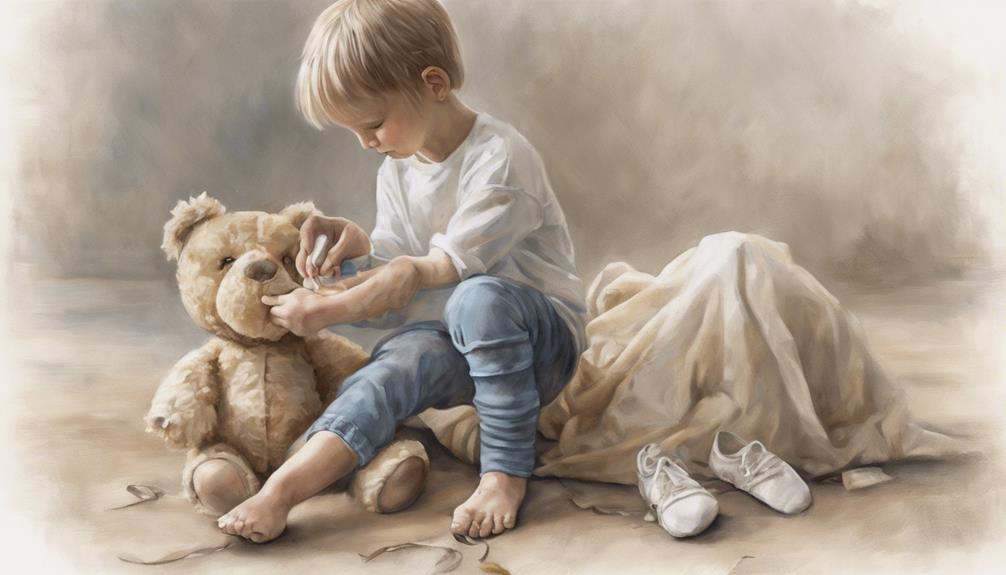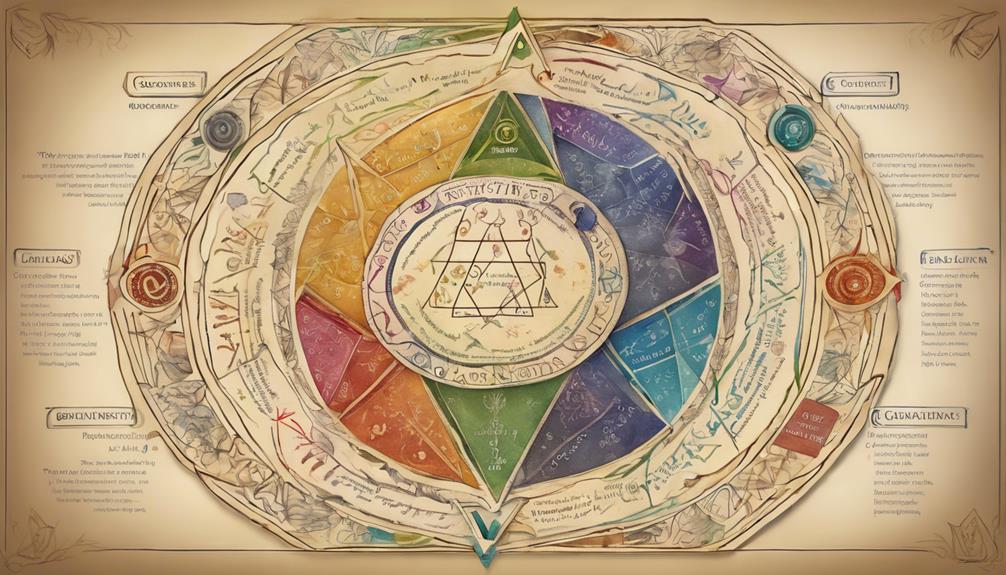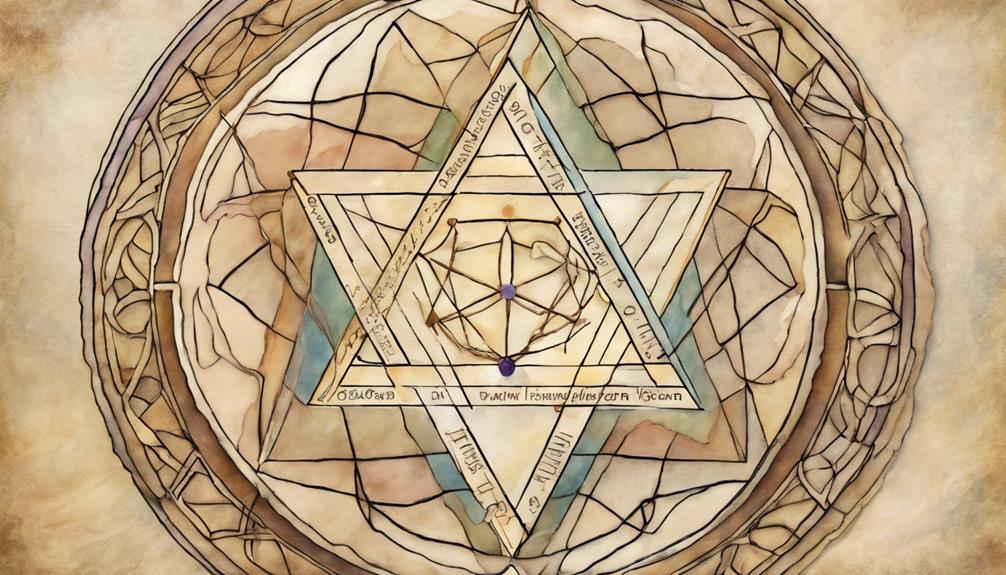As we explore the complex mix of traits that make up our personalities, we may find ourselves pondering: how do past experiences from childhood shape our Enneagram types?
Each thread, intricately tied to moments long past, influences our behaviors and perceptions today. But what exactly are these threads made of, and how do they shape our unique patterns of thought and action?
Let's unravel the layers of childhood wounds in Enneagram types together, shedding light on the complex interplay between past experiences and present identities.
Key Takeaways
- Enneagram Ones develop stringent principles due to a lack of nurturing protectors in childhood.
- Enneagram Twos struggle to assert their needs after prioritizing others' approval and self-sacrifice.
- Enneagram Threes fear rejection and prioritize external validation, often losing touch with their authentic selves.
- Enneagram Fours shape their identity through rejection experiences, battling feelings of inadequacy and self-blame.
Enneagram One: Self-Judgment Impact
Enneagram One individuals, shaped by childhood wounds, grapple with profound self-judgment that stems from a disconnection with a protective figure and a rigid adherence to a strict moral code. Growing up, the absence of a nurturing protector leaves a void that drives Ones to construct an internal framework of stringent principles. This upbringing instills a deep-seated belief that their worthiness is contingent upon meeting these high standards, leading to relentless self-scrutiny. The constant need to seek approval arises from early experiences of feeling unseen or unvalued, fostering a compulsion to excel in all endeavors.
Their critical inner voice becomes a constant companion, whispering reminders of perceived shortcomings and fueling an insatiable drive for perfection. This self-monitoring extends to their emotions, with anger often suppressed to maintain an outward appearance of composure. Feelings of inadequacy loom large, prompting Enneagram Ones to tirelessly strive for flawlessness in hopes of filling the void left by childhood wounds. The inner turmoil caused by this self-judgment can be overwhelming, shaping their interactions and decisions as they navigate a world that often fails to meet their impossibly high standards.
Enneagram Two: Self-Sacrifice Influence

Having internalized the childhood wound of self-sacrifice, Enneagram Two individuals often find themselves prioritizing others' needs above their own, shaping their identity around caretaking and seeking approval through selflessness. Growing up, they learned that their worth was tied to how well they could meet the needs of those around them, leading to a pattern of suppressing their own desires to ensure the happiness of others.
This coping mechanism of self-sacrifice served as a way to feel valued and loved, as they believed that by taking care of everyone else, they'd receive the approval and acceptance they craved. However, this pattern also made it challenging for Enneagram Twos to assert their own needs or ask for help when necessary, as they'd learned to prioritize external validation over internal acknowledgment.
The struggle to internalize love and acceptance for who they truly are stems from a childhood where their worth was contingent upon their ability to selflessly give to others, leaving little room for authentic self-expression.
Enneagram Three: Core Self Rejection
Growing up, the nurturing figure in their life shaped Enneagram Three's perception of approval and success, leading them to prioritize achievements and external validation over embracing their true self. Enneagram Threes often felt undeserving, believing that if their true selves were known, they would face rejection. This core self rejection led them to focus on their ego self rather than their true self, working tirelessly to distract from their authentic identity. The wounds from their childhood experiences linger, influencing their behavior and choices.
| Childhood Wounds | Impact on Enneagram Three |
|---|---|
| Approval through achievements | Prioritizing external validation |
| Feeling undeserving | Distracting from true self |
| Fear of rejection | Focusing on ego self |
Understanding these dynamics can help Enneagram Threes address their core self rejection, embrace their true selves, and move towards a more authentic and fulfilling life.
Enneagram Four: Identity Rejection Effects

Feeling like outsiders and yearning for profound connections, childhood wounds deeply influence Enneagram Fours' perception of self-worth and uniqueness. Enneagram Fours often struggle with feelings of inadequacy and rejection, stemming from early experiences of perceived loss and abandonment.
Here are some effects of identity rejection on Enneagram Fours:
- Sensitive to Loss: Enneagram Fours are acutely attuned to feelings of loss, which can amplify their sense of deprivation and worthlessness.
- Blame and Self-Criticism: Fours may blame themselves for the rejection and abandonment they faced in childhood, leading to a pattern of self-criticism and self-doubt.
- Showcasing Uniqueness: To counter feelings of inadequacy, Enneagram Fours often strive to highlight their uniqueness and special qualities, seeking validation and acceptance.
- Shaping Sense of Self: The experiences of rejection and loss in childhood deeply shape Fours' sense of self, influencing their relationships and how they navigate the world.
Understanding these effects can help Enneagram Fours heal and embrace their true selves with compassion and acceptance.
Enneagram Five: Intimacy Rejection Consequences
Enneagram Five individuals, shaped by their early experiences of neglected and unresponsive caregivers, often struggle with intimacy rejection, leading them to prioritize autonomy and intellectual retreat as protective mechanisms. Feeling emotionally vulnerable, they become self-sufficient and seek independence as a defense mechanism against potential hurt.
Enneagram Fives find it challenging to connect deeply with others, as intrusions into their emotional space can trigger a withdrawal into their intellectual world. The struggle with intimacy stems from a fear of emotional invasion, causing them to guard their innermost thoughts and feelings closely. While they value autonomy, it can sometimes isolate them further, hindering their ability to form close relationships.
Understanding the roots of their self-sufficiency and prioritization of independence can help Enneagram Fives navigate their journey towards more meaningful connections and emotional openness.
Frequently Asked Questions
Can Childhood Trauma Change Your Enneagram Type?
Yes, childhood trauma can influence how we embody our Enneagram type. Our coping mechanisms from trauma may shape our behaviors, fears, and beliefs within our type. Healing can lead to shifts and growth in how we express ourselves.
What Is the Enneagram 8 Childhood Trauma?
We understand Enneagram 8 childhood trauma as feeling ambivalence towards nurturing figures, leading to a tough persona. Growing up quickly to avoid vulnerability, they categorize the world into weak and strong, anticipating rejection, and betrayal.
What Is the Enneagram 2 Childhood Trauma?
We felt the weight of ambivalence towards parental figures, learning to suppress our needs for acceptance. Missing early emotional validation, we honed the skill of meeting others' needs, often neglecting our own.
What Is the Childhood Trauma of the Enneagram 7?
We learned that Enneagram Sevens faced childhood trauma from feeling disconnected from nurturing figures at home. This led them to seek comfort in transitional objects and activities, nurturing themselves through distractions and excitement.
How Can Childhood Wounds Impact a Counterphobic 6 Enneagram’s Traits and Insights?
Childhood wounds can heavily influence the development of counterphobic enneagram traits insights in individuals. A Counterphobic 6, in particular, may exhibit exaggerated defense mechanisms and a strong need for external validation due to past trauma. These experiences can shape their behavior and decision-making processes throughout their lives.
Conclusion
As we journey through the Enneagram types, we uncover the layers of our childhood wounds that shape our present selves. Like a mosaic of broken pieces, our past experiences form a unique pattern within us.
By acknowledging and understanding these wounds, we can mend the cracks and embrace our true selves with compassion and insight.
Let's continue to explore, heal, and grow, unraveling the complexities of our personalities and relationships along the way.
Eugene brings a fresh, dynamic voice to our platform as one of our talented Writers. Specializing in research-driven content, he explores the latest findings in psychology and personal growth, translating them into actionable insights for our readers. Eugene’s work is fueled by a curiosity about what makes us tick and a desire to help others unlock their potential.










